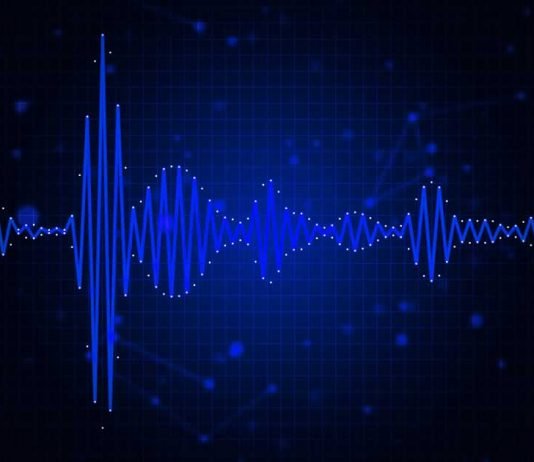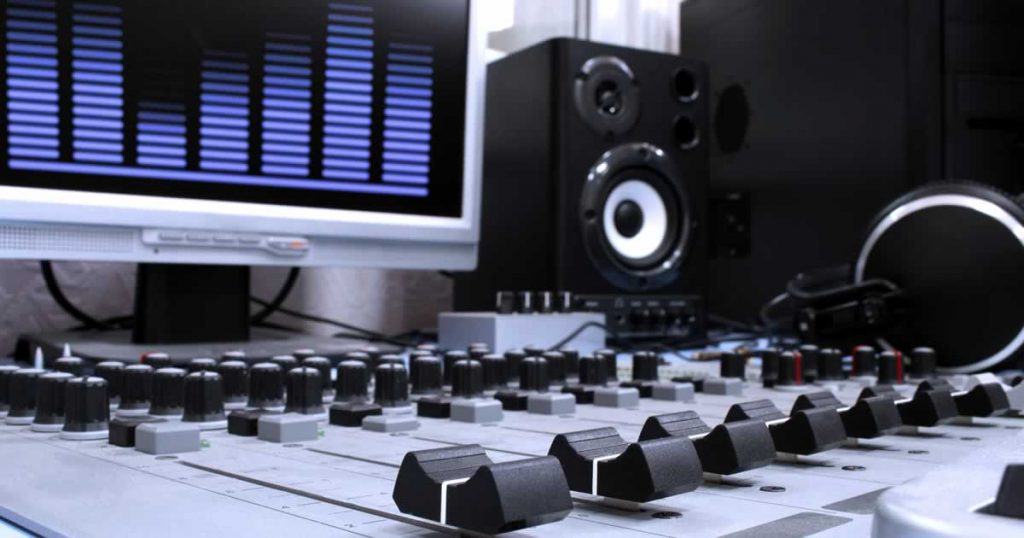Sounds are daily essentials for everyone. The ringing alarm clock wakes us in the morning, the whistling kettle that signals the morning coffee is ready, and the timer on the toaster saying your breakfast is good to go.
But, there are also other producers of sound like electronic devices, audio devices, and electro-acoustical devices. Do you ever wonder how they can sound the way they do? Have you ever wondered how these devices can reproduce sound as if you’re listening to the real thing?
In all these instances and more, audio devices function because they passed the strict standards of product testing made possible by audio analyzers. These innovative boxes of equipment find various applications in different fields and industries. They aid in equipment testing, product enhancement, and quality assurance. In essence, audio analyzers help us hear the sounds we want to hear and eliminates noise and distraction. While it’s a rather technical process, audio analyzers ensure over-all sound quality in different types of audio devices.
What Are Audio Analyzers?
Audio analyzers test and measure the audio performance of various electronic and digital devices. Audio analyzers measure how well an electronic audio device (speaker, stereo, microphone, etc.) transmits a signal. The audio analyzer sends a test signal to the device under test (DUT), and the operator compares the original signal to the signal emitted by the DUT. It then analyzes the device’s performance based on several parameters such as gain, total harmonic distortion plus noise (THD+N), signal-to-noise ratio (SNR), crosstalk, and phase.
Often expressed as Watts, Volts, dBU, or dBV (decibels as referenced to voltage), level pertains to the size or magnitude of a signal. Gain is the ratio between the output and input signal of the device under test. The THD+N measures the distortions and noise from different sources, while the signal-to-noise ratio (SNR) considers how much noise is present in the device’s output. Crosstalk refers to the leakage of a signal from one channel to another, whereas phase is the relation of two signals of the same frequency.
Audio analyzers often have user interfaces that display the parameters measured. These are also used simultaneously with audio analyzer software and mobile applications. The signal test results are displayed either as bar or line graphs that inform engineers regarding the performance of the device being tested. These indicate pass or fail results, which are helpful in product development and enhancement.
That’s a lot of technical stuff, indeed. Now that we have a fairly good idea of what audio analyzers are, let’s look at the types of analyzers.
Types of Analyzers
There are three types of audio analyzers: analog, digital, and converter-based. The difference between the analog and digital audio analyzers is the hardware they use. An analog audio analyzer utilizes analog hardware and filters to measure performance. Similarly, digital audio analyzers generate and analyze signals using digital signal processing (DSP) algorithms. Converter-based audio analyzers produce and assess signals in the digital domain and use analog-to-digital (ADC) or digital-to-analog converters (DAC) to create analog inputs and outputs.
Application of Audio Analyzers
A wide selection of these instruments is available on sites like https://www.ap.com/audio-analyzers/. The use of audio analyzers is beneficial in various fields and applies to a wide variety of electronic devices. Sound engineers and other professionals use audio analyzers for:
- Device Testing: Audio analyzers serve to check the device’s capability to produce quality sound by comparing it to standard equipment and ratings. It also checks for noise and interference in an electronic device.
- Product Enhancement: Product developers use audio analyzers to improve devices. Ratings inform developers how technology can reduce noise and interference to produce quality sound input and output for consumers.
- Quality Assurance: perform measurement and evaluation to ensure that electronic and electro-acoustic devices comply with industry standards. Products must adhere to individual specifications before their release to the market.
Common Electronic Audio Devices Assessed by Audio Analyzers
The technical process employed by analyzers ensures that the audio devices we use to produce quality sound conform to quality standards. Some of the electronic instruments that benefit from equipment testing are:
- Radio / Car Stereo
Radio analyzers ensure FM transmissions of live broadcasts conform to standard procedure. These also aim to minimize noise and interference within acceptable limits. These often use digital analyzers to measure previously mentioned parameters of noise, distortion (harmonic and intermodular), and crosstalk.
In the case of car stereos, analog analyzers evaluate different sound environments, detect disturbances, and provide an objective comparison of different receivers’ performance. It considers the quality of sound produced in different car cabins and the potential interferences that car stereos encounter while driving on public roads.
- CD Players
Audio testing for CD players requires the use of a test CD and corresponding software. The test CD contains the required measurements that automatically run in a sequence, producing a print-out of the results. The analyzer evaluates audio frequencies within the 20 Hz to 20 kHz range based on noise and distortion, phase, crosstalk, and intermodular distortion.
Audio analyzers can also detect defective CDs using another specialized CD that is sensitive to surface scratches and the CD’s information layer.
- Electro-acoustical devices
Audio analyzers test electro-acoustical devices such as loudspeakers, microphones, and amplifiers.
Single microphones are tested based on their ability to produce a flat frequency response using a reference microphone or speaker. Audio analyzers can also test several microphones simultaneously. Tests inform sound engineers and quality assurance teams on the frequency response, sensitivity, distortion, signal-to-noise ratio, and idle channel noise. These can also help detect audible imperfections. Amenable measurements ensure audio quality whenever one uses microphones for large venues and thick gatherings.
Regarding loudspeakers, real-time analyzers determine the speaker’s output in terms of volume and frequency. Apart from the real-time analyzer, loudspeakers also require pink noise to track on a CD.
- Smartphones and Tablets
Audio testing for smartphone and tablets involve checking the earphone circuit, speaker, and microphone before shipment. Testing tools include audio analyzers and sound cards to check distortion and noise specifications.
Audio quality is an essential feature for these devices that companies are continually infusing new technology to boost listening, viewing, and gaming experiences. The recent decade shows an explosion of audio innovations, such as wireless earphones and earbuds, multi and 3D audio, turntables, and bone conduction headphones, to name a few.
- Music Recording and Mixing
Spectrum analyzers work well for music recording and mixing for several reasons. Testing determines issues with individual channels and instruments, such as rumbles and hums and unwanted peaks in vocal sounds. Measurements also identify poor acoustics and help you understand how standing waves can affect the quality of bass sounds. Analyzers also ensure ideal monitoring and comparison with a reference mix.
- Hearing Aids
Hearing aids analyzers ensure that hearing aids serve true to amplifying sounds to assist people with hearing deficiencies. Analyzers first measure how well hearing aids act as liner amplifiers of sound, then proceed to determine the device’s ability to strain out noise, provide direction, and lessen distortion. These ensure that hearing aids can function in different environments like homes, restaurants, function halls, and others.
Sound Analyzer Apps
You can commonly find various types of sound analyzers in laboratories, production lines, and music studios. These specialized testing equipment are expensive and, at times, bulky that its operations are reserved to a handful of professionals.
Thanks to the development of mobile apps, sound analyzers are now within reach of ordinary folks. These apps now function the same way as professional audio testing equipment minus the bulk, technicality, and price.
Sound analyzer apps now feature spectrum analyzers that act as precise tuning instruments for different audio devices—home theater, speakers, and car stereos. These apps identify the various sounds you hear and measure ambient noise found in different settings. They’re useful in informing owners on the output of home electronic devices. They may even inform owners how loud sounds can be and allow the adjustment of volumes to acceptable levels.
These apps not only function to fine-tune various audio devices, as these can also help sound technicians and independent musicians in their musical recordings and mixes. As such, mobile sound apps make audio quality essential for many.
Conclusion
Audio analyzers are interesting instruments that measure the sound-producing capability of electronic and electro-acoustical devices. These testers are useful in correcting defects and improving products while still in the production line. Analyzers also function as quality assurance tools to guarantee products adhere to industry specifications before shipment and consumer consumption.
Whether analog, digital, or converter-based, audio analyzers find applications in testing a wide array of products used at home, work, on the road, or at places of leisure. These can even assist hearing aid technologies to better serve people with hearing impairments.
While its technical operations are mostly performed by sound engineers, therefore requiring expertise, the proliferation of sound analyzer apps provides ordinary people opportunities to fine-tune their instruments and gadgets to enhance their listening experience.
In sum, audio analyzers are useful tools applicable to a variety of venues and devices. These audio quality testers make sound and music an enjoyable experience for everyone, whether as hardware, software, or mobile applications.

